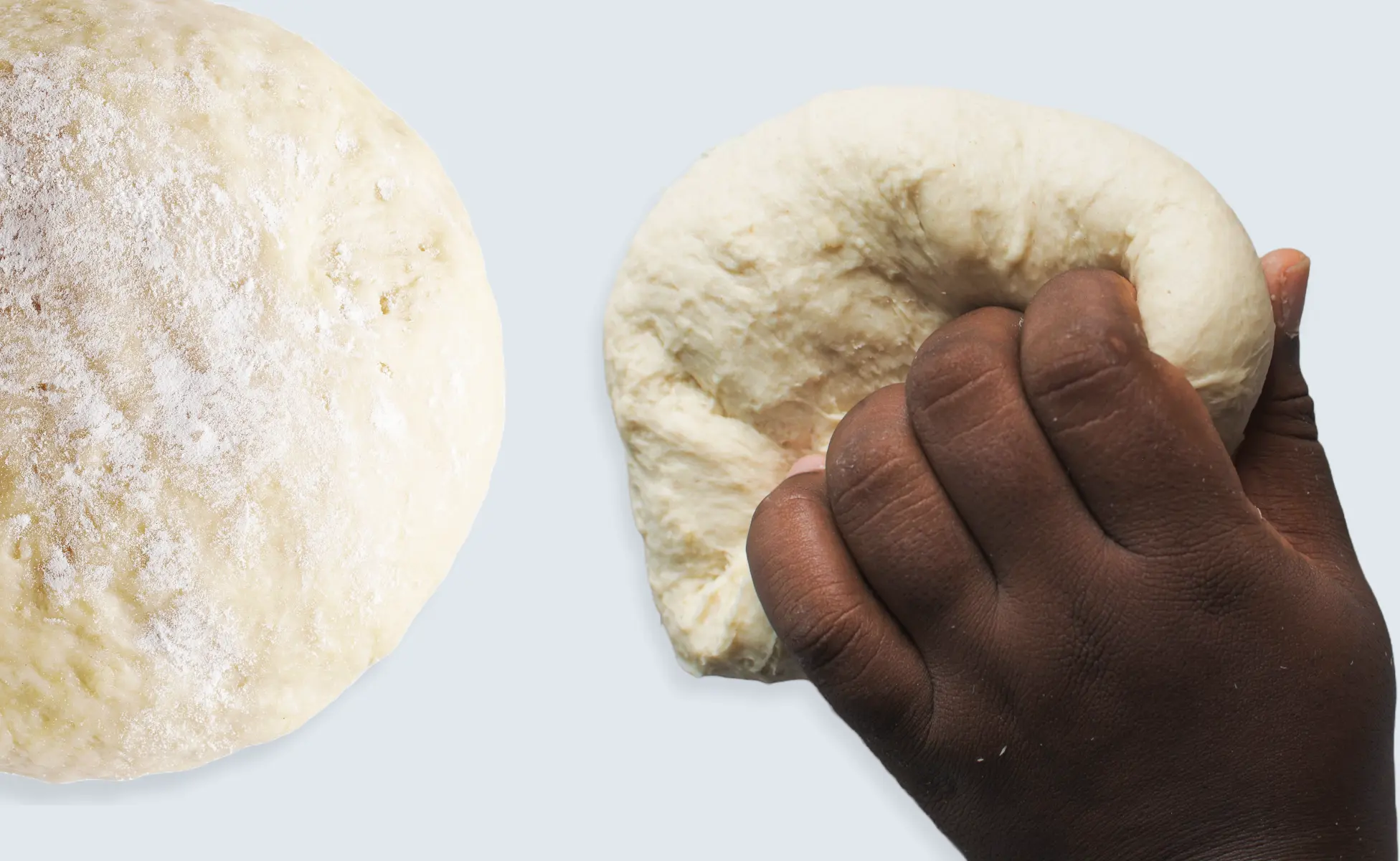Understanding Dough Tenacity, How to Measure It, and Why

Table of Contents
The Components of Dough Consistency
Among the various adjectives that are used to describe dough, we find the notion of tenacity.
For a baker, the “tenacity” of dough is its capacity to "resist" deformation. We will also discuss "consistency" to illustrate the fact that dough will be more or less hard or soft. Both terms are correct because tenacity is one of the components of consistency (along with viscosity, extensibility, elasticity and stickiness).
Achieving the required tenacity is important for a baker. Dough that is “hard” will be easier to work with, it will be less sticky and keep its shape, but it will not develop as well during fermentation, it will negatively impact the structure of the crumb and limit the production of aromas. Dough that is softer (called “soft” dough) will be more difficult to work with, but it will allow for optimal development in fermentation and in the oven. It will encourage a crumb with irregular alveoli and aroma development will be good. This is what we look for when we make Ciabatta, for example. In France, some people believe that the quality of a baker is measured by his/her ability to work with “soft” dough.
The tenacity of the dough is directly related to the hydration level of the flour. At constant formulation, the more water you add to the flour, the softer the dough.
How is the Tenacity of Dough Measured in the Laboratory?
The ideal tool for measuring the tenacity of dough is the Alveolab. Tenacity is measured at the start of the test by the value "P" (see "Alveograph").

Constant Hydration Testing
We start by studying the Constant Hydration Alveograph test. Under these test conditions, we know that the amount of water added to the dough is always the same. We also know that some flours have a higher hydration capacity than others. The addition of water (at constant hydration) to strong flour will not allow the dough to be completely hydrated, in which case it will be considered more "hard."
When the piece of dough is placed on the plate and the test begins, the Alveograph pushes air under the dough disk to initiate the formation of a bubble. What happens next is very similar to inflating balloons by mouth: at first, it resists. And sometimes it even resists a lot!
Let's go back to our piece of dough placed in the Alveograph. Since the dough resists deformation and the pump continues to send air into a small volume, the pressure in the bubble increases rapidly. It will increase until the pressure reaches a point at which the dough can no longer resist and the bubble will start to swell (like a balloon). It is therefore possible to measure the maximum pressure that is a direct function of the dough's ability to resist deformation ... and therefore its tenacity.


The interpretation is then quite simple: the higher the "P" value, the higher the tenacity of the dough. And this applies to all flours without exception.
Adapted Hydration Testing
There is another approach that consists of working with Adapted Hydration levels. For the Alveograph, this is based on a first measurement, carried out with the Consistograph, which makes it possible to measure the hydration capacity of the dough. In other words, the amount of water to add to obtain a specific constant consistency (2200 mb in our case).
Once this is done, an Alveograph test is performed using this “new” hydration. The piece of dough is placed on the plate and the test is conducted as described above with the same conclusions. The tenacity obtained under these test conditions is called “PHA”. You will notice that the PHA values obtained are far from constant. A recent study by the CHOPIN applications laboratory, carried out on 150 wheats from around the world, showed values ranging from 30 to 150 (Figure 1)…which demonstrates that in the end, tenacity is only one of many components of consistency.

How Are the Methods Related?
One may in turn wonder whether there is a relationship between tenacity measured at constant hydration and that measured at adapted hydration. The answer is yes, partially (Figure 2).

One of the reasons for this correlation is found in the elements involved in the hydration of the dough. We must remember that these are mainly proteins, damaged starch and pentosans (i.e. "Fibres"). All other things being equal, it is logical that a flour with a higher protein level has a stronger tenacity, regardless of the protocol used. It is in fact recognized that gluten, and in particular glutenins, plays a part in the tenacity of a dough.
Some people look for low tenacity (cookies, wafers, etc.) while others look for higher tenacity (sliced bread, panettone bread, etc.). Whatever protocol is used, however, the direct assessment of tenacity with the Alveograph provides valuable information for manufacturers regarding the secondary transformation of the flour.
Related Blog Posts
















